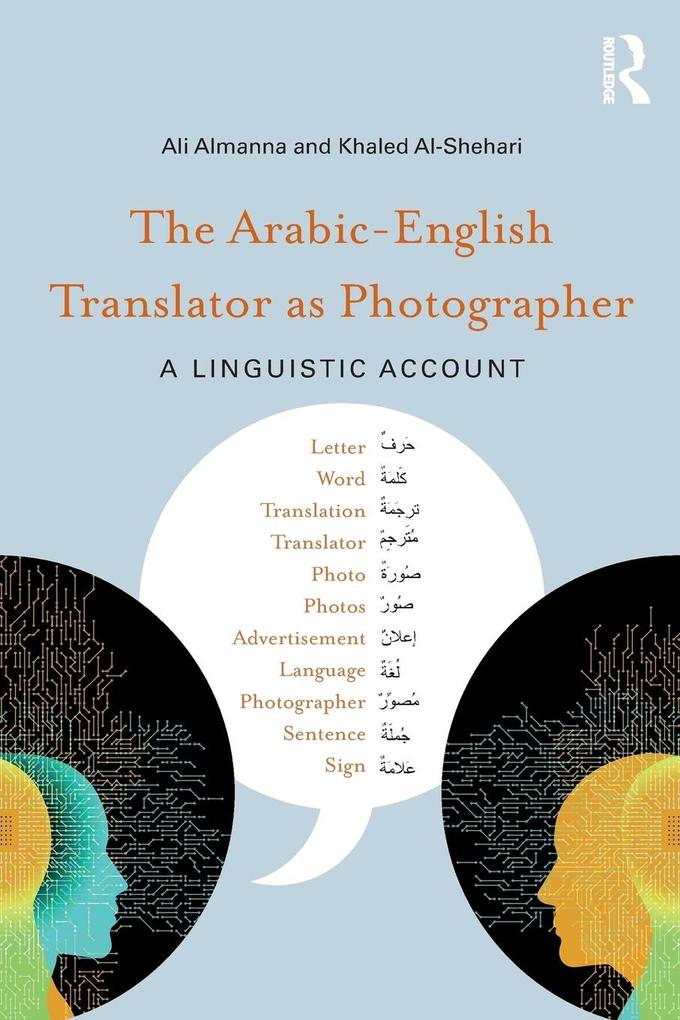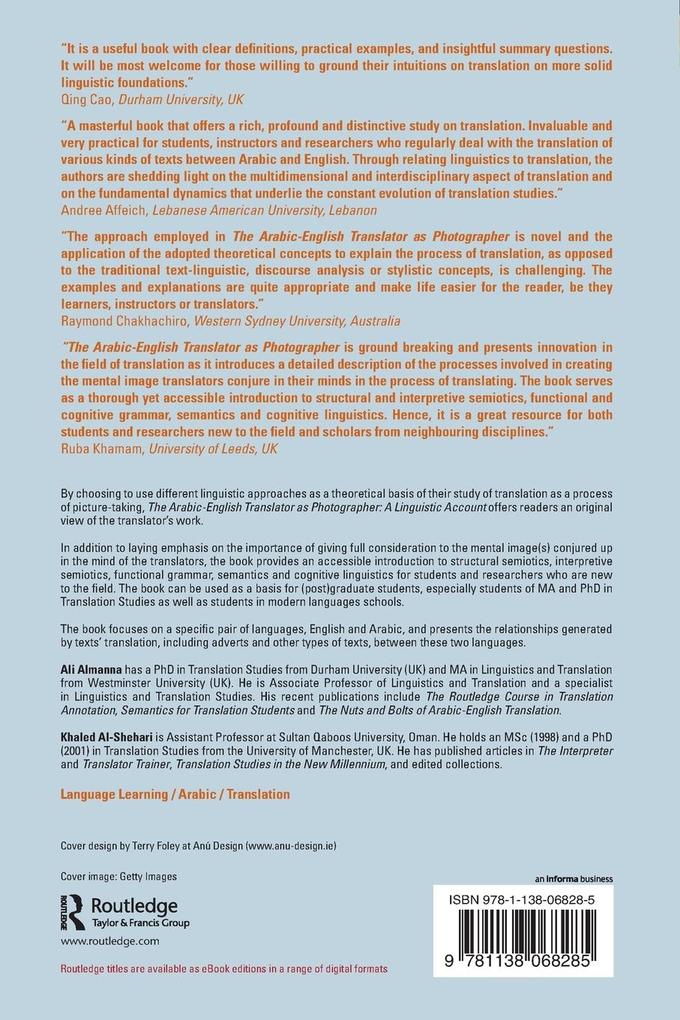
Zustellung: Fr, 30.05. - Di, 03.06.
Versand in 6 Tagen
VersandkostenfreiBestellen & in Filiale abholen:
By choosing to use different linguistic approaches as a theoretical basis of their study of translation as a process of picture-taking, The Arabic-English Translator as Photographer: A Linguistic Account offers readers an original view of the translator's work.
In addition to laying emphasis on the importance of giving full consideration to the mental image(s) conjured up in the mind of the translators, the book provides an accessible introduction to structural semiotics, interpretive semiotics, functional grammar, semantics and cognitive linguistics for students and researchers who are new to the field. The book can be used as a basis for (post)graduate students, especially students of MA and PhD in Translation Studies as well as students in modern languages schools.
The book focuses on a specific pair of languages, English and Arabic, and presents the relationships generated by texts' translation, including adverts and other types of texts, between these two languages.
In addition to laying emphasis on the importance of giving full consideration to the mental image(s) conjured up in the mind of the translators, the book provides an accessible introduction to structural semiotics, interpretive semiotics, functional grammar, semantics and cognitive linguistics for students and researchers who are new to the field. The book can be used as a basis for (post)graduate students, especially students of MA and PhD in Translation Studies as well as students in modern languages schools.
The book focuses on a specific pair of languages, English and Arabic, and presents the relationships generated by texts' translation, including adverts and other types of texts, between these two languages.
Inhaltsverzeichnis
Contents
Acknowledgements
Note on Transliteration
List of abbreviations
Chapter 1: Setting the scene: introductory matters
Who is the book for?
Why is it different?
Structure of the book
Hypotheses & research questions
Significance of the book
Theoretical background
Key technical terms
Warming up exercises
Further reading
Chapter 2: Signs & syntagmatic and paradigmatic axes
Semiotics
Signified versus signifier
Syntagms and paradigms
Commutation test
Key technical terms
Exercises
Further reading
Chapter 3: Sign's functions & intertextuality
Peirce's interpretive semiotics
Iconic function
Indexical function
Symbolic function
Intertextuality
Key technical terms
Exercises
Further reading
Chapter 4: Transitivity system
Transitivity
Material processes
Mental processes
Verbal processes
Behavioural processes
Relational processes
Existential Processes
Circumstances
Key technical terms
Exercises
Further reading
Chapter 5: Semantic roles and energy transfer
Arguments & types of semantic roles
Verb-specific semantic roles
Grammatical relations and semantic roles
Energy transfer & mental contact
Key technical terms
Exercises
Further reading
Chapter 6: Imaging systems I: The configurational system
Plexity
State of boundedness
State of dividedness
Degree of extension
Pattern of distribution
Axiality
Scene partitioning
Key technical terms
Exercises
Further reading
Chapter 7: Imaging systems II: attention, perspective & force dynamics
Distribution of attention
Force dynamics
Deployment of perspective
Location
Distance
Mode
Direction
Key technical terms
Exercises
Further reading
Index
Acknowledgements
Note on Transliteration
List of abbreviations
Chapter 1: Setting the scene: introductory matters
Who is the book for?
Why is it different?
Structure of the book
Hypotheses & research questions
Significance of the book
Theoretical background
Key technical terms
Warming up exercises
Further reading
Chapter 2: Signs & syntagmatic and paradigmatic axes
Semiotics
Signified versus signifier
Syntagms and paradigms
Commutation test
Key technical terms
Exercises
Further reading
Chapter 3: Sign's functions & intertextuality
Peirce's interpretive semiotics
Iconic function
Indexical function
Symbolic function
Intertextuality
Key technical terms
Exercises
Further reading
Chapter 4: Transitivity system
Transitivity
Material processes
Mental processes
Verbal processes
Behavioural processes
Relational processes
Existential Processes
Circumstances
Key technical terms
Exercises
Further reading
Chapter 5: Semantic roles and energy transfer
Arguments & types of semantic roles
Verb-specific semantic roles
Grammatical relations and semantic roles
Energy transfer & mental contact
Key technical terms
Exercises
Further reading
Chapter 6: Imaging systems I: The configurational system
Plexity
State of boundedness
State of dividedness
Degree of extension
Pattern of distribution
Axiality
Scene partitioning
Key technical terms
Exercises
Further reading
Chapter 7: Imaging systems II: attention, perspective & force dynamics
Distribution of attention
Force dynamics
Deployment of perspective
Location
Distance
Mode
Direction
Key technical terms
Exercises
Further reading
Index
Produktdetails
Erscheinungsdatum
20. Dezember 2018
Sprache
englisch
Seitenanzahl
160
Autor/Autorin
Ali Almanna, Khaled Al-Shehari
Verlag/Hersteller
Produktart
kartoniert
Gewicht
254 g
Größe (L/B/H)
234/156/9 mm
ISBN
9781138068285
Entdecken Sie mehr
Bewertungen
0 Bewertungen
Es wurden noch keine Bewertungen abgegeben. Schreiben Sie die erste Bewertung zu "The Arabic-English Translator as Photographer" und helfen Sie damit anderen bei der Kaufentscheidung.











